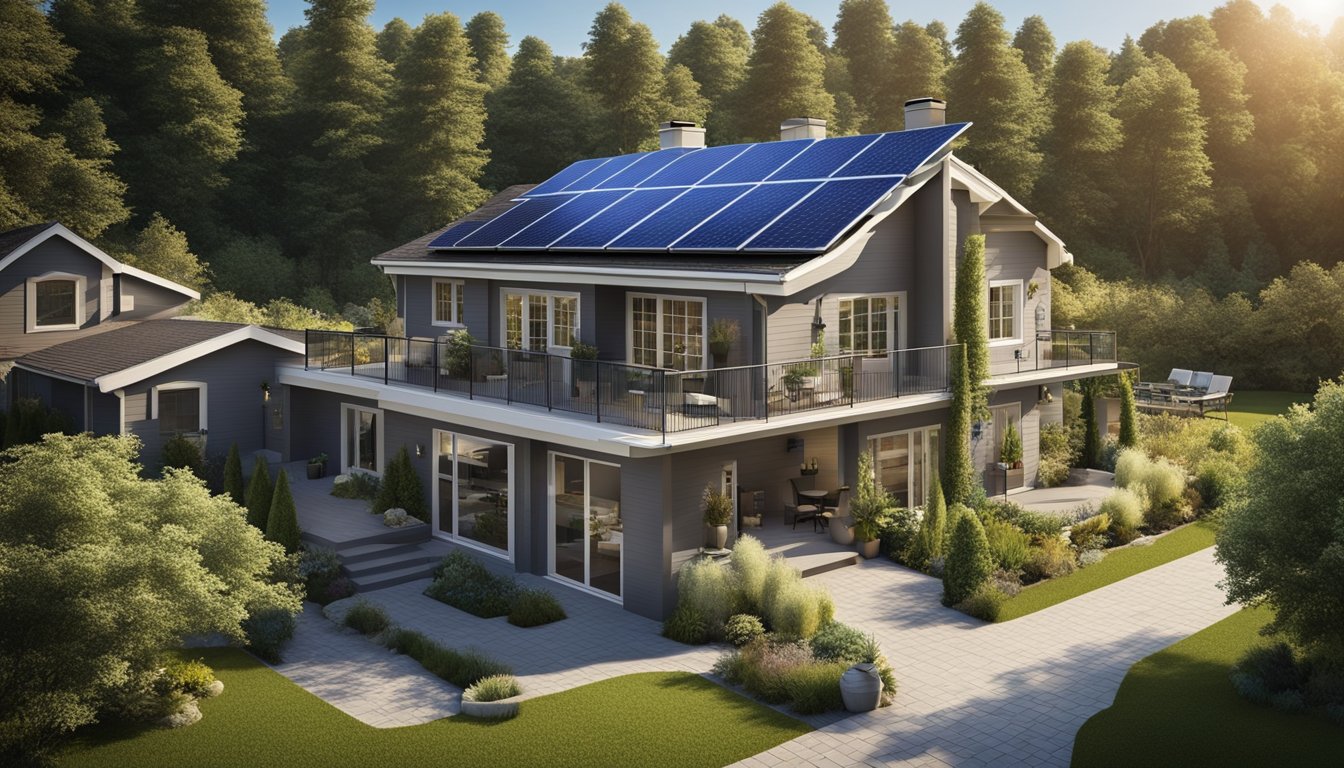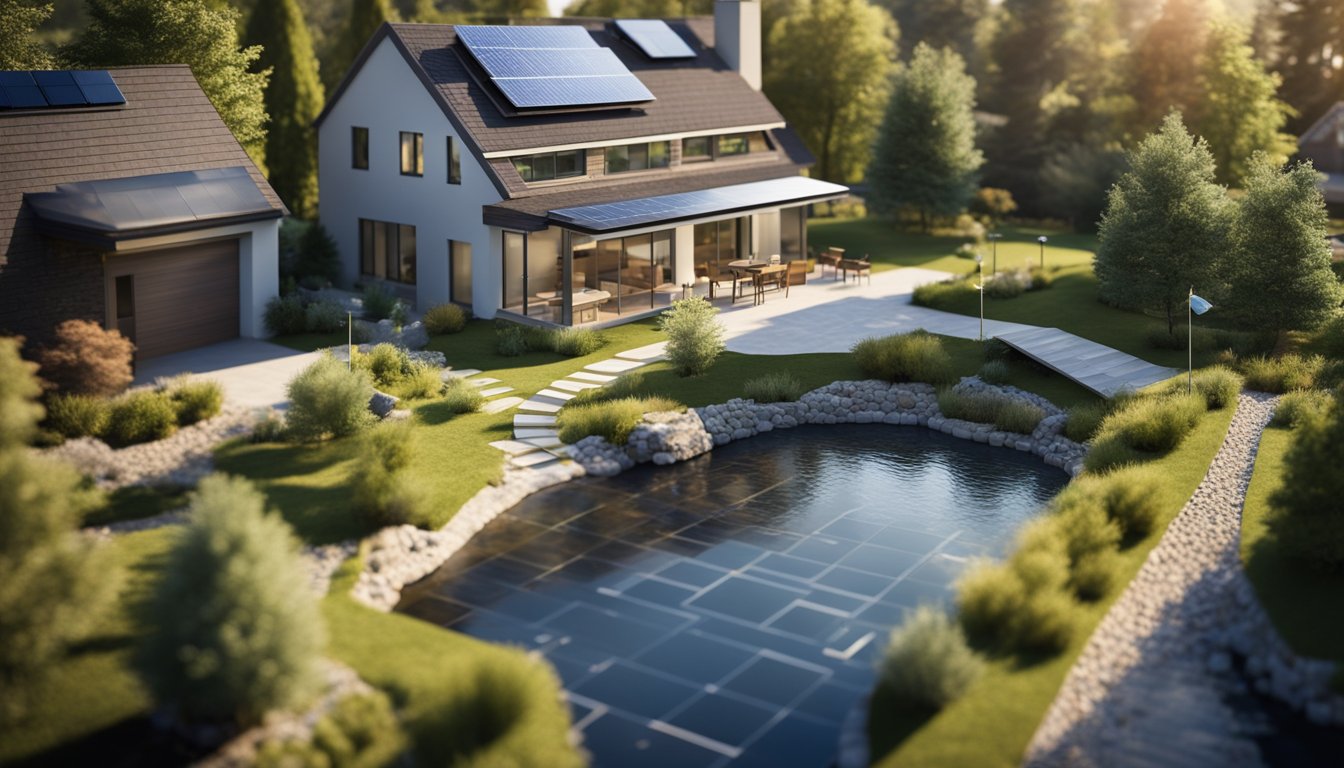Late updated: 10 Nov 2024 15:11
Written by: Eleanor Hartman
How To Choose The Best Renewable Energy Source For Your Home: A Comprehensive Guide
Choosing the best renewable energy source for your home can seem daunting, but it is an essential step toward reducing carbon footprints and increasing energy efficiency. The key is to evaluate your specific energy needs and the environment in which you live to determine the most suitable option. Wind, solar, and hydropower each have unique characteristics that may make one more applicable to your situation than another.

Our goal is to guide you through understanding how each renewable energy source can fit into your lifestyle. Factors to consider include the location of your home, local climate patterns, and available space for installations such as solar panels or wind turbines. This tailored approach ensures you maximise clean energy benefits while minimising costs.
Additionally, planning improvements in your home’s energy efficiency is crucial when integrating renewables. Enhancing insulation and addressing draughts can substantially decrease energy waste, making any investment in renewable sources even more effective. By the end of this article, you'll have a clearer picture of the optimal renewable energy strategy for your home.
Key Takeaways
- Evaluate specific energy needs and environment for best renewable fit.
- Consider local climate and space for installations when choosing a source.
- Improve home energy efficiency to maximise renewable energy benefits.
Understanding Renewable Energy Options
To make an informed decision on renewable energy for our homes, we need to delve into specific sources available. Each option comes with unique benefits and considerations, allowing us to match the best energy solution to our needs.
Solar Power: Harnessing the Sun
Solar energy is one of the most accessible renewable energy sources. Solar panels convert sunlight directly into electricity, and they can either power our entire home or supplement existing energy use. This makes it an ideal choice for sunny regions.
Installation requires an initial investment, but government incentives often help offset costs. Maintenance is minimal; we primarily need to ensure that panels are clean and in optimal condition.
For those of us interested in independent energy, off-grid solar systems are viable. They provide autonomy from utility companies and can supply electricity in remote areas.
Wind Energy: Capturing the Breeze
Wind turbines can be a practical solution for homes in areas with consistent wind speeds. These systems convert kinetic wind energy into electricity, reducing reliance on conventional power sources. Small residential turbines can serve as a primary source or complement solar installations.
To decide if wind energy is suitable, we should consider local zoning laws, average wind speed data, and the investment cost. Although initial setup can be expensive, operational costs are generally low once installed.
The environmental impact is low, and the turbines can significantly decrease our carbon footprint. However, noise and aesthetic impact are factors to assess.
Hydropower and Biomass: Alternatives to Consider
Hydropower generates electricity by using water flow to drive turbines. While it's typically associated with large-scale operations, small-scale systems can power homes near consistent water sources.
Biomass energy involves burning organic materials like wood or agricultural waste. It's a versatile option for heating and electricity. Biomass can be a carbon-neutral solution if sourced sustainably, as new plant growth reabsorbs emitted carbon.
Both options, while promising, require specific site considerations and access to resources. Given their resource-demanding nature, they might serve best in rural settings or as supplementary energy forms.
Geothermal Energy: The Earth's Heat
Geothermal energy harnesses the constant temperature beneath the Earth's surface for heating and cooling. Geothermal heat pumps can dramatically improve energy efficiency in homes, as they transfer heat to and from the ground.
Initial costs for geothermal systems are higher than for other renewable options, yet they offer lower operating expenses and long-term savings. This system also provides year-round comfort with minimal emissions.
These systems favour regions with geothermal resources but can be effective even in moderate climates. As a reliable renewable energy source, geothermal provides a consistent alternative for environmentally conscious homeowners.
Planning Your Home Renewable Energy System

To effectively plan a renewable energy system for your home, we need to assess energy needs and efficiency, consider technical and financial elements, and understand installation and maintenance protocols.
Evaluating Your Energy Needs and Efficiency
We should start by conducting a comprehensive energy assessment. This involves calculating energy and electricity usage and understanding peak times for demand. Accurate evaluation is crucial for selecting the right system, whether it's solar panels or wind power.
Improving energy efficiency is often a priority. Ensuring proper insulation and draught-proofing could substantially cut energy requirements. Reducing wastage through efficiency not only conserves resources but also diminishes the size and cost of the needed renewable energy system.
Technical and Financial Considerations
Understanding the technical requirements is essential. We must consider the suitability of solar or wind energy, alignment of solar panels, wattage requirements, and available roof space. Each property has unique needs that influence system design.
On the financial side, exploring incentives like tax credits and net metering can substantially lower costs. The UK offers various schemes to reduce financial burdens. Discussions with professionals can provide estimates and help navigate building codes and regulations.
Installation and Maintenance
The installation process requires attention to detail and careful planning. Installation might involve grid connection or deciding on a stand-alone system. Considerations of local regulations, planning permissions, and real estate implications are imperative.
After installation, ongoing maintenance ensures system performance. Regular inspections, cleaning of solar cells, and monitoring energy output is important. Proactive management can enhance longevity and efficiency while contributing to reductions in greenhouse gas emissions and maintaining our carbon footprint.
Frequently Asked Questions

In choosing a renewable energy source for home use, numerous factors can influence decision-making. These factors include budget considerations, energy needs, and potential environmental benefits.
What factors should be considered when selecting a renewable energy system for domestic use?
When opting for a renewable energy system, location is crucial. The availability of resources like sunlight, wind, or water in your area dictates suitable options. Financial considerations, including upfront costs and potential savings, also play a role in determining the most feasible solution.
Which renewable energy source offers the most cost-effective solution for residential properties?
Solar panels often emerge as a cost-effective choice. With decreasing installation costs and various incentives available, they become financially viable for many homeowners. Particularly in sunny regions, they provide a good return on investment by reducing electricity bills.
How does one assess the efficiency of different renewable energy options for home installation?
Efficiency assessment involves examining the energy output relative to costs. Considerations include the system's efficiency rating, potential energy savings, and maintenance costs. Homeowners should also evaluate the compatibility of the system with existing energy needs.
What are the primary benefits of integrating renewable energy into your home energy scheme?
Integrating renewable energy reduces reliance on fossil fuels, lowering carbon emissions. It can also result in financial savings through reduced utility bills and potential earnings from selling excess energy back to the grid, depending on local policies.
Can you list practical steps for homeowners to transition to renewable energy?
Homeowners should start by conducting an energy audit to determine current usage. Researching local incentives and consulting with renewable energy experts can provide guidance. It's crucial to choose a reputable installer and ensure that all technical and regulatory requirements are met.
What are the environmental impacts of using various renewable energy sources at home?
Using renewable energy sources decreases dependence on non-renewable resources, thereby reducing greenhouse gas emissions. Solar and wind energy have minimal environmental impacts during operation, though manufacturing and installation processes should be considered. Sustainable practices ensure that these systems contribute positively to environmental goals.